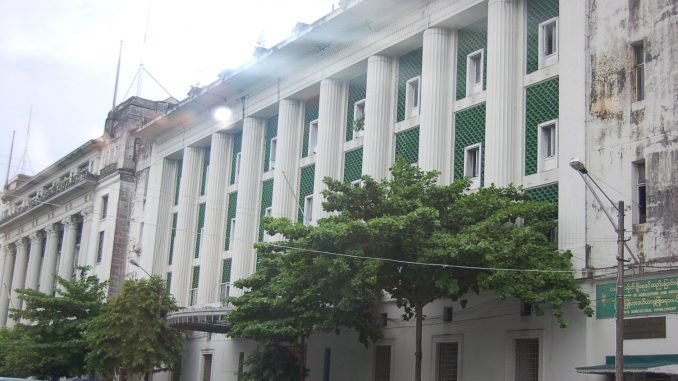
There is a timeless, romantic quality about the city of Yangon. Built on the banks of the Yangon River, with a great loop of water curving around two-thirds of the city, it has that unmistakable air of a seaport: a sense of purpose, of commerce, a constant activity. Walk along one of the main thoroughfares, Strand Road, which runs by the riverside, and you will see ocean-going freighters and cruise ships moored alongside tiny sampans and the sturdy old teak vessels that ply between the north and south of Myanmar.
Look too at the grand old buildings which line the streets in this part of the town. These are the legacy of the British, and they have a colonial splendor which has aged gracefully with the passing of the years. The maritime buildings, Supreme Court, City Hall, railway station, numerous churches and lovely old villas; all part of the fabric of the city. So too is the mercantile past, with century-old ornately fronted shophouses crammed along Merchant Street, Mahabandoola Street, and all the other grid-patterned streets until you reach Sule Pagoda Road beyond which there is the National Stadium, a handful of embassies, the road out to Kandawgyi Lake, and the endless lush greenery of big trees and spacious gardens which casts such an air of tranquility over Yangon.
Sule Pagoda – A golden landmark indeed. Reputed to be 2,000 years old, and shrine to a hair of the Buddha, it is located in the heart of the commercial district, towering almost fifty metres above the city streets, its gleaming chedi visible from almost anywhere, twinkling in the sunlight at you through narrow lands, across busy roads, and over the low-rise rooftops.
Buddhism permeates the lives of the good citizens of Yangon, and is partly the reason that these generous hearted people are so friendly and hospitable to strangers. In and around Yangon there are many other wonderful Buddhist temples and monasteries. Botataung Pagoda, for example, which is located on the riverside and from whose jetty you can stand and watch the crowded ferries plying across the water. Then there is Chauktatgyi Pagoda, which houses a severy-two metre long reclining Buddha. But over and above all these beautiful places of worship, there is Shwedagon Pagoda. Shwedagon is the spiritual heart of Buddhist Myanmar. For more than two millennia, standing on a small hill at the edge of the city, its immense golden stupa set with diamonds, rubies, sapphires and topaz, and with more than a hundred smaller stupas, pavilions and halls in the immense garden, Shwedagon has been protecting and embracing the city of Yangon, its people, and its visitors.
